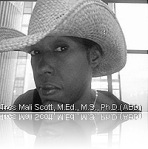This title is endorsed by TMSC Consulting SVCS, LLC Management & Leadership Division by Tres Mali Scott, Management Theorist & Who’s Who Of Professionals in Management since 2000.
Recommendations to reduce civilian injury due to terrorism, para-terrorism, and extremist group activities:
- Define the religious practices that are violent enough to appear as an “act of war” or “armed conflict” as such to ensure International law intervention for civilian populations.
- It is recommended that the Global Military alliances with the United Nations and The Vatican are named as Superior Powers or Supreme Powers. (Vatican City is a Supreme Soft Power that has the capacity to discern International Humanarian Law issues).
- It is recommended that the aforementioned alliances and powers are recognized defined, listed and then re-listed every five years to remain accurate, specific, and certain.



